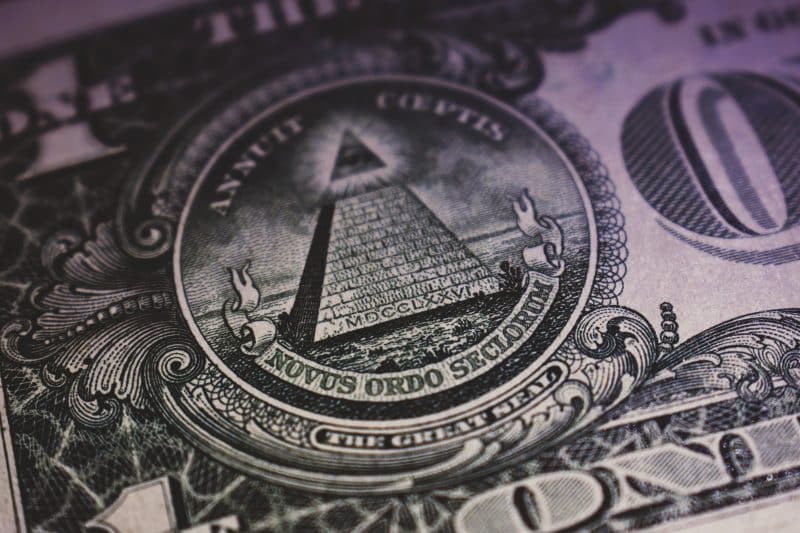In the last several months, the battle against inflation has been underway. It is not over yet, even though the Federal Reserve has made significant progress in this area. Since March 2022, the Fed has been increasing its key interest rates en masse. However, the effects of these actions have not resulted in a significant slowdown to the economy. A similar maneuver was executed by Volcker in the early 1980s. At that time, the peak of inflation was around almost 11 percent. It was brought under control, but the consequence was a significant increase in the unemployment rate. Currently, the rate is relatively low in the US. The labor market is still strong, but there is substantial deflationary process visible. In 2023, the US economy grew by 2.5 percent, and in 2022 by 1.9 percent.
There could be various reasons for this situation. One of them is the fact that inflation expectations have not risen in the last two years and remain stable. It was quite different over 40 years ago. Back then, inflation expectations followed rising prices. Why did this happen? This can be attributed to the low inflation levels that the US had for a long time, and the high credibility that Fed enjoyed. The institution responded decisively (although the first decision to raise interest rates was slightly delayed) and further movements upward by 75 bp showed the Fed’s high determination in fighting this undesirable economic phenomenon.
In the 1980s, the US had already experienced a long period of high inflation, which caused doubts about the effectiveness and willingness of the central bank to curtail inflation. In the distant past, when faced with anticipated persistent high inflation, employees demanded higher wage increases. These demands were met with less resistance from companies because they assumed they could continue to pass this cost onto customers. To halt this process, The Fed had to curb the economy. Due to current stable inflation expectations, Powell has needed to dampen demand less substantially, thus has been able to make monetary policy less restrictive than Volcker did some forty years ago.
Another factor to consider is fiscal policy in the US, which to a certain extent offset the dampening effect of interest rate increase. Strong government support flowed with the outbreak of the pandemic. Those funds were depleted in 2021 and 2022, slowing down the growth of the US economy. However, this slowing factor largely expired in the second half of 2022, whereas the negative effects of the Fed’s recent actions began to show. Biden then initiated the Inflation Reduction Act (IRA) and another bill called CHIPS which aimed to make the US independent from semiconductors from China and increase the competitiveness of the overall industry.
Inflation has not spiralled out of control, despite popular voices of such a scenario. This is the result of previously mentioned stable expectations but also a flexible labor market. After the pandemic crisis, the labor force participation rate quickly returned to normal. For comparison, after the 2009 economic downturn, it took a long time for the rate to return to pre-crisis level. There has also been a positive supply shock to the population. Immigration to the US sharply increased between 2022 and 2023, positively influencing demand and bolstering the economy. Immigrants often accept lower wages, contributing to slower wage growth.
While a more substantial slowdown cannot be completely ruled out, the gap between the first interest rate hike and recession after the last financial crisis was 3.5 years. However, avoiding a recession seems more likely. The burden on the economy caused by tightening monetary policy seems to have passed its peak, as evidenced by the stabilisation of the US building sector, one of the major channels of monetary policy transmission. House prices are on the rise again, as indicated by the S&PCase/Shiller index. Loan granting conditions have also been softened, mortgage financing rates have fallen by one percentage point, a result of market expectations for impending rate cuts.
The Fed’s task is to prevent another rise in inflation, and the recent increase requires caution. At the same time, the institution wants to avert an American economic recession. Therefore, the Fed is likely to balance its monetary policy in the coming months. Some decision-makers have already noted that the real interest rate has risen due to lower inflation, making policy more restrictive.
The Fed does not have the knife to its throat; the risk of recession is low, so a drastic cut in rates is not required. The central bank will, at most, want to adjust its monetary policy parameters, but a return to low interest rates (which we have observed in the past: 2009-2015 and 2020 – 2021) is unlikely in the next 2 – 3 years.
In the forthcoming week, investors should pay attention to the report on Americans’ spending (Thursday), which includes the Fed’s preferred measure of inflation. The Friday ISM report for the US industry also seems critical. The market will also be watching the US GDP result for the fourth quarter (Wednesday). Preliminary HICP inflation data for February will arrive from the Eurozone and Germany, Italy and France. Europe will also present the final PMI measures for the industry (Poland included). Additionally, we will get to know how fast the domestic economy developed in the final quarter.
Łukasz Zembik Oanda TMS Brokers
